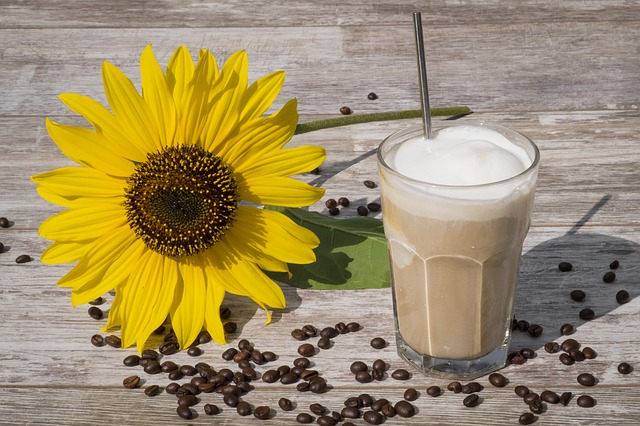Is it possible to reheat cold brew coffee?
Some people believe that cold brew coffee should only be served cold, and this is a widespread misunderstanding. While it is true that there are some things you should and should not do with specific kinds of coffee, there is some wiggle room when it comes to cold brew espresso. Because of this, you have alternatives.
Is it possible to reheat cold brew coffee?
Is it possible to reheat cold brew?
Warming cold brew coffee is one option. Because it is normally sold in concentrated form, adding hot water just warms it up and dilutes the concentrate, resulting in a beverage that is more like a standard cup of espresso. You may change the strength of your hot coffee by varying the quantity of hot water that you use to make it.
Our greatest techniques and suggestions for converting your cold brew into a cup of coffee that will brighten your day are revealed in this article.
But first, let us give you a little overview of what cold brew is all about:
What is cold brew, and how does it differ from other beverages?
For good reason, cold-brew coffee is a unique sort of coffee that is smooth, adaptable, and has gained a cult following over the last couple of years. In most cases, it is prepared in concentrated form, which allows for the greatest amount of versatility while maintaining all of its distinctive qualities.
‘Cold brew’ refers to the method of brewing used to create this particular cup of coffee. The taste of the coffee is enhanced by soaking the beans in cold water rather than boiling water.
Even though it takes longer (often anywhere from 12 to 18 hours), using cold water instead of boiling water allows the beans to absorb all of their natural flavors. Additionally, the bitter components in the bean are left behind by the cold water, resulting in a more smoother flavor and texture overall.
Modern cold brew coffee machines, which enable you to brew at home with relative ease, have started making their appearance on the market recently. You may even infuse your brew with nitrogen, like with the GrowlerWerks uKeg, to create a “nitro cold brew,” which has a creamy, frothy head similar to that of Guinness stout.
An article about outstanding cold-brew coffee beans may be found here.
Roots Although the exact origins of cold brew coffee are unknown, the oldest documented evidence of coffee being prepared with cold water comes from Japan, where it was first documented in the 1600s.
Cold brew coffee has a long and illustrious history in the United States, particularly in the city of New Orleans. It grew in popularity when firms like as Blue Bottle and Stumptown adopted the methods and made them more widely accessible to the public at large. The introduction of cold brew coffee by Starbucks in 2015 marked the turning point in the popularity of cold brew coffee.
Cold brew coffee from Starbucks, in a bottle.
In today’s world, this way of brewing coffee may be found almost everywhere. In fact, supermarket shops sell concentrates that are shelf-stable for extended periods of time. Make your own coffee if you’re like me and have a strong preference for the flavor and texture of your cup of joe.
Is cold brew coffee the same as iced coffee in terms of taste and consistency?
You would not be alone in thinking whether cold brew coffee is simply another ruse to pass off iced coffee as something else given the way packaging is designed these days.
It is undeniably true that cold brew coffee is distinct from iced coffee in flavor and appearance. It’s largely the method of preparation that distinguishes them, and the flavors are vastly different.
Iced coffee is made using hot coffee that has been chilled in the refrigerator or poured over ice after it has been brewed and cooled further. The water used to make iced coffee is hot, as opposed to the cold brew coffee described above. There are certain disadvantages to cooling hot coffee to produce iced coffee.
As an example, pouring coffee over ice has the potential to significantly dilute its flavor while also resulting in the feared “watered-down coffee taste”
Coffee in a jar with ice cubes is a refreshing beverage.
Ice cubes have the unfortunate tendency of diluting coffee.
Because the beans are soaked in cold water, cold brew coffee has a powerful, robust taste that does not need you to chill the coffee before drinking.
In most cases, cold brew coffee has a distinct flavor that cannot be replicated by any other way. The taste is smoother, less harsh, and more chocolaty in flavor, according to several people. It has a particular flavor that may not be to everyone’s taste.
Cold brew has a lower acidity than regular brew.
Many people disagree on this point. Marketing claims that cold-brewed coffee is less acidic than traditional coffee and would be beneficial to persons with sensitive stomachs have been made since since cold-brewed coffee first became popular.
Indeed, it has almost reached the status of sacred text. Researchers from Thomas Jefferson University conducted a peer-reviewed study in 2018 and discovered that there was minimal variation in acidity between cold brew and hot brew.
It was reported by Daily Coffee News that they had come up with some surprising results.
The advantages of warming cold brew coffee are many.
For those of you who are in a hurry in the morning, utilizing cold brew concentrate for hot coffee might really be a very practical way to receive your caffeine kick. Creating a batch of cold brew over the weekend and just adding hot water whenever you need it is a simple and convenient solution.
When compared to ordinary hot-brewed coffee, the addition of hot water does not dilute the coffee much since cold brew is a highly concentrated beverage in its own right.
Methods for drinking cold brew while still warm
Using the stovetop, warm it up
In honor of the fact that it makes me feel the most like a coffee expert, I prefer to refer to this approach as “barista.” As far as I’m concerned, this is the most challenging approach since it might be tough to get the right temperature for extracting the full taste of the coffee. You may use anything from a kettle to a tiny saucepan, as long as you keep the heat on low to avoid burning.
Using heated water, dilute it
Heating cold brew coffee in this manner is the most basic way. To make cold brew concentrate, all you have to do is boil some water and pour it over it. Pro tip: Heat up some additional water and pour part of it into your cup beforehand to warm the cup before you begin.
Using this method, the coffee will gradually warm up rather than being shocked by high temperatures immediately upon serving.
Cold brew may be made in the microwave in minutes.
The microwave seems to elicit so strong feelings in so many individuals. Coffee is heated in the microwave, which is my favourite technique since it is convenient and efficient. Adding a splash of water to your cold brew for dilution before heating it up in the microwave is all that’s required of you.
Lemon-infused espresso Easy French Toast Latte Recipe Light Roast Coffee Brewing Guide Use Flavored Syrups in these 9 Different Ways Is it Possible to Make Espresso using Regular Coffee?
4 REASONS TO TRAVEL TO GLEN CANYON NATIONAL PARK
Is it Possible to Make Espresso using Regular Coffee?
4 REASONS TO TRAVEL TO GLEN CANYON NATIONAL PARK
It takes roughly a minute in my microwave, but every microwave is different, so explore until you find the right time. Then you’ll be able to perform it on autopilot before you’ve even fully awakened.
And that’s basically all there is to it. You should now understand how to make the ideal cup of hot cold brew.
Will the flavor be different?
When coffee is heated, or even reheated, certain chemical reactions occur that may somewhat modify the flavor and quality of the coffee.
When heat is given to the coffee, compounds in the coffee react with oxygen, causing the taste to degrade more rapidly.
The unique procedure of preparing cold brew coffee implies that the oxidation of molecules inside the coffee has been slowed down by the use of cold water.
Even if you heat your cold brew coffee, this “aging” process will take considerably longer than it would for hot-brewed coffee. A minor change in flavor is possible, although it will be less noticeable than if you were to re-heat freshly prepared coffee.
Putting aside any and all of the scientific arguments for why cold brew coffee produces a superb cup of coffee, you must experience it for yourself to see what a difference it makes. If you like cold brew coffee and want something warm to drink during the chilly winter months, try this simple “recipe.”





